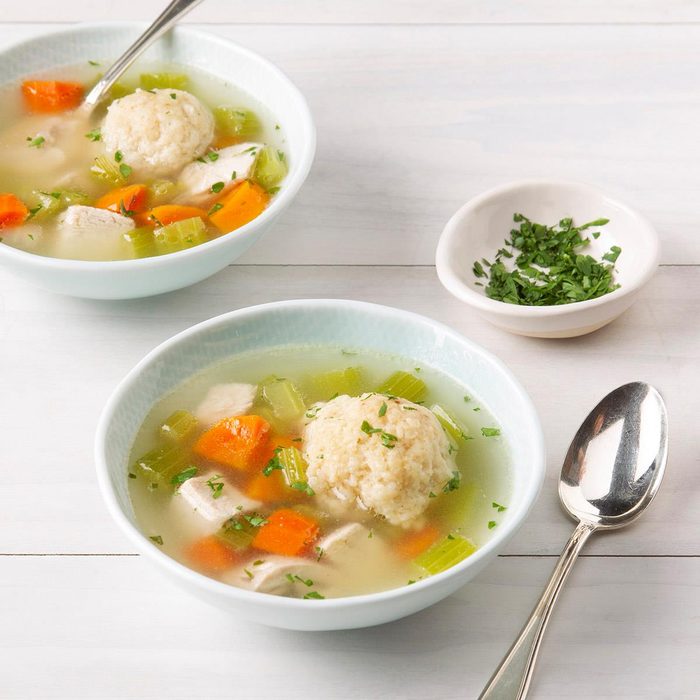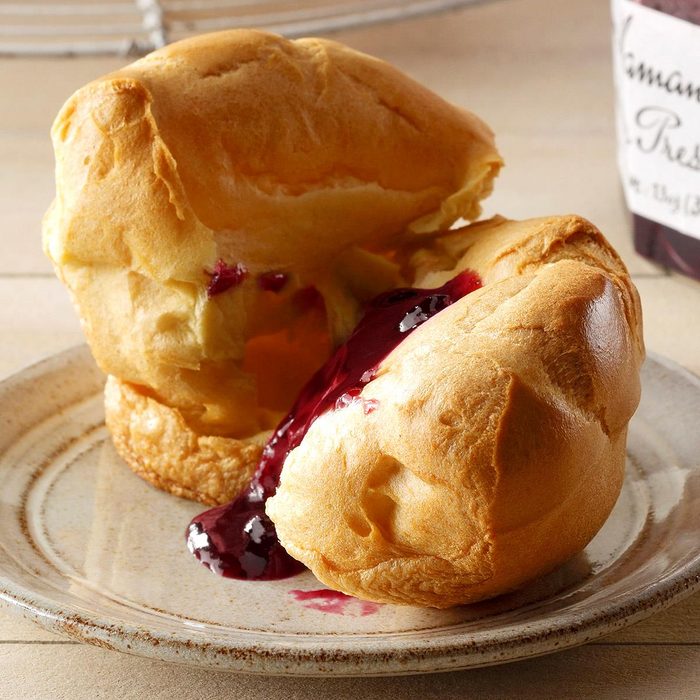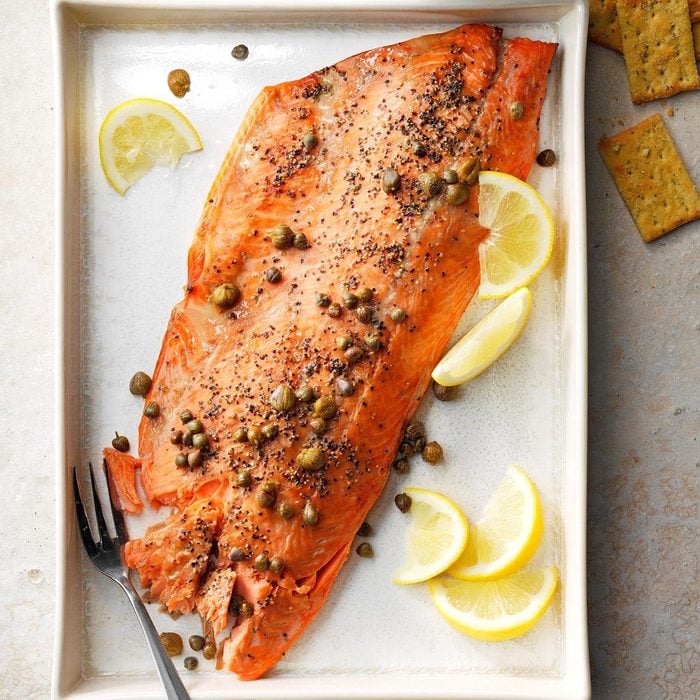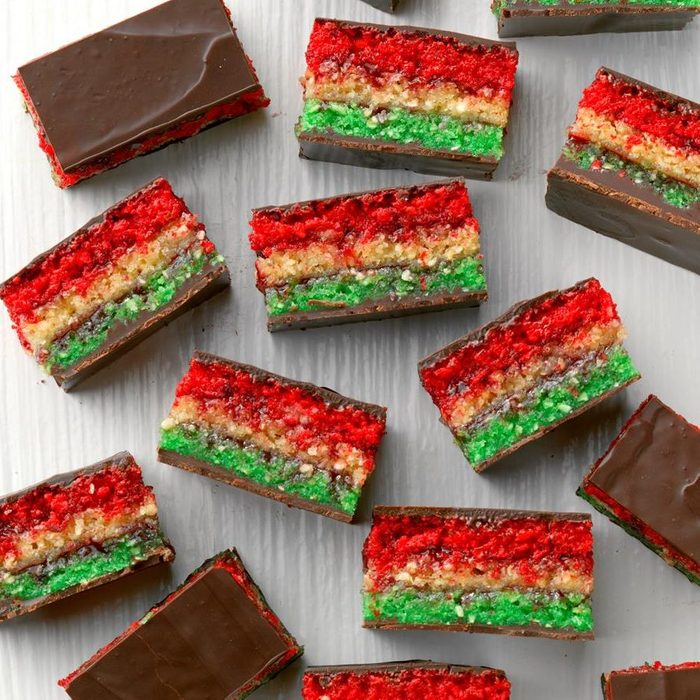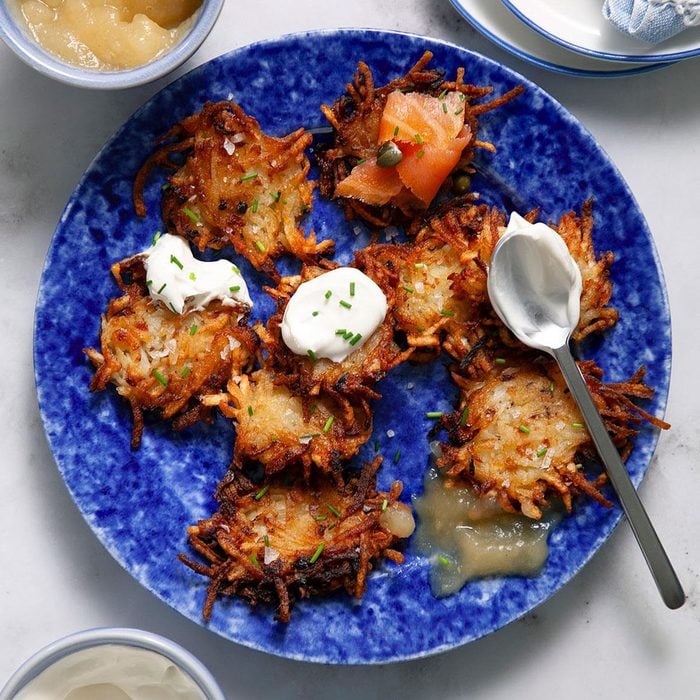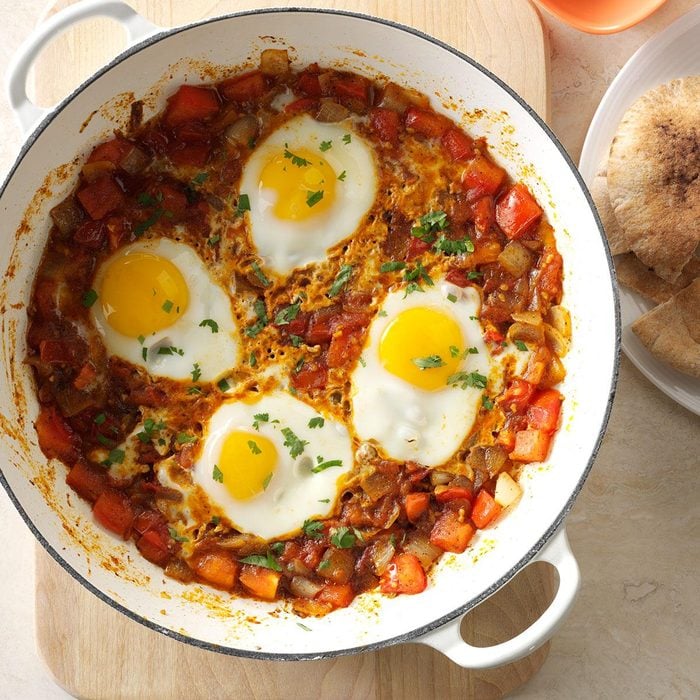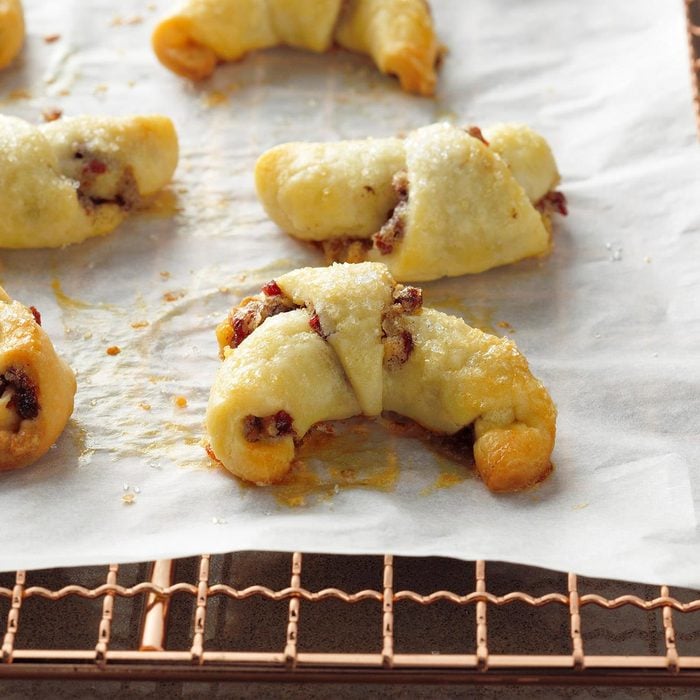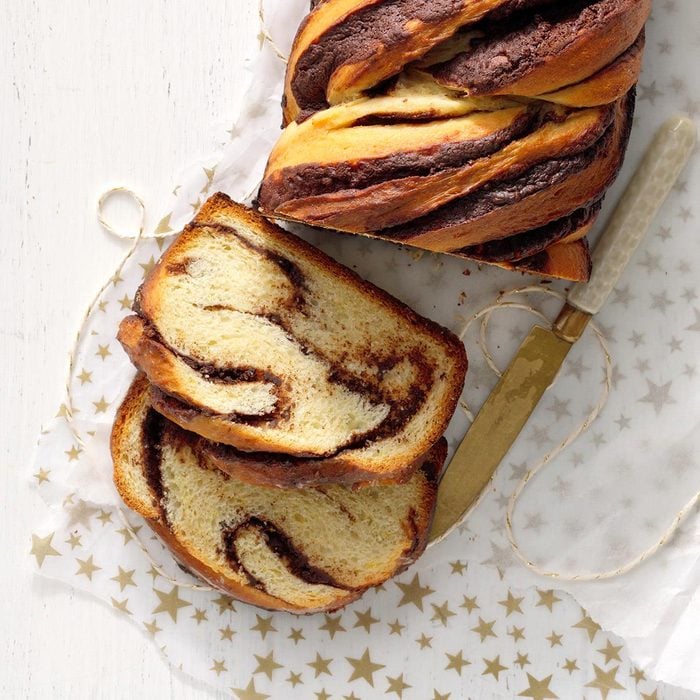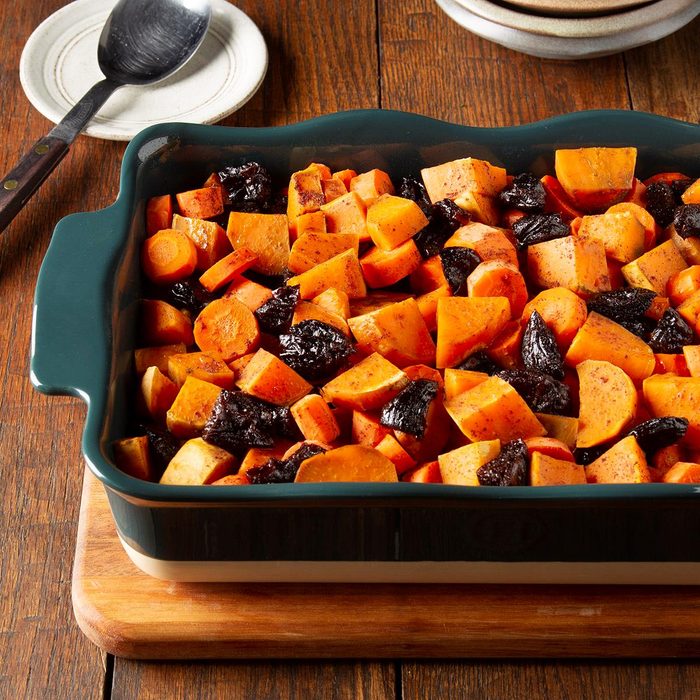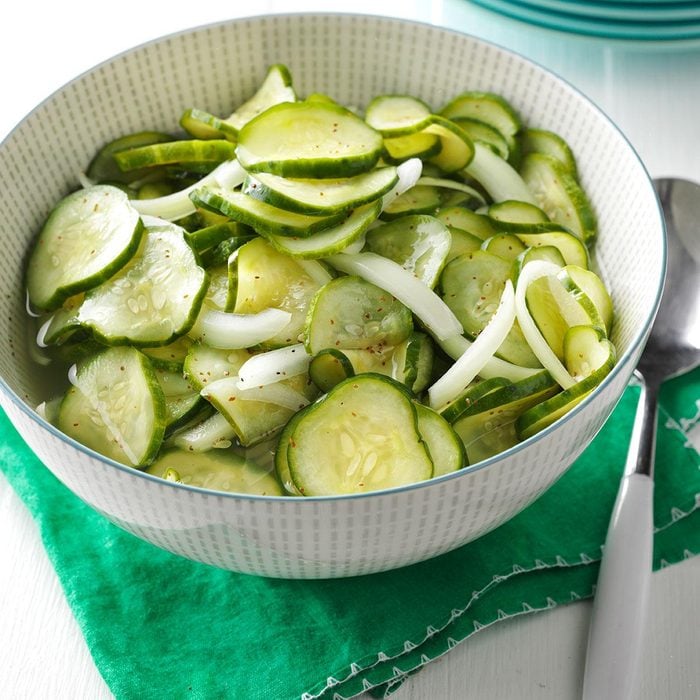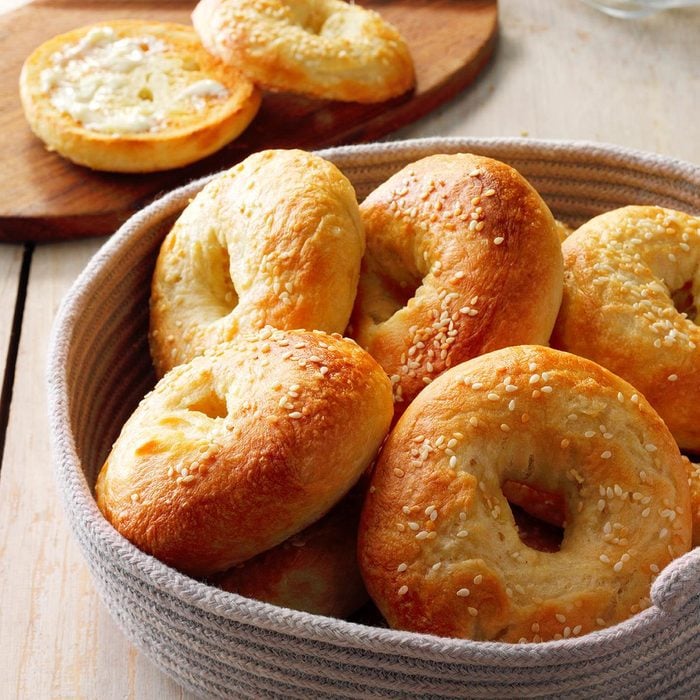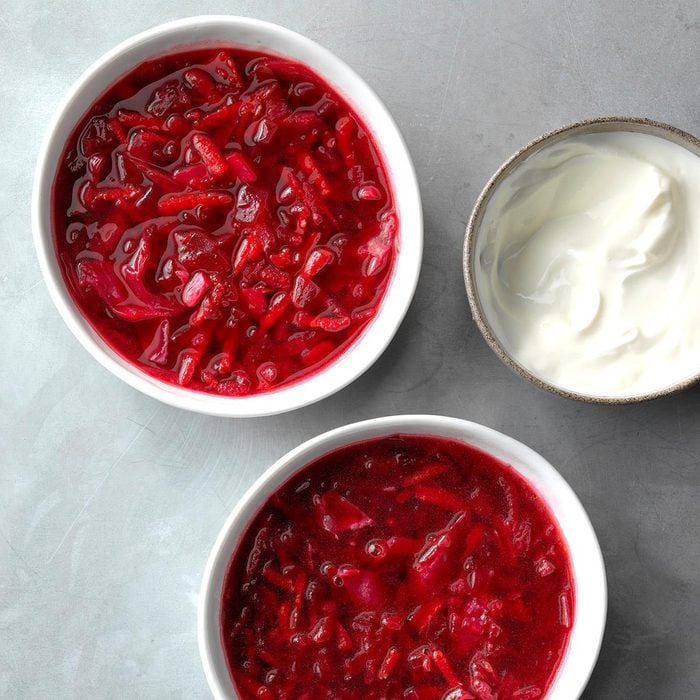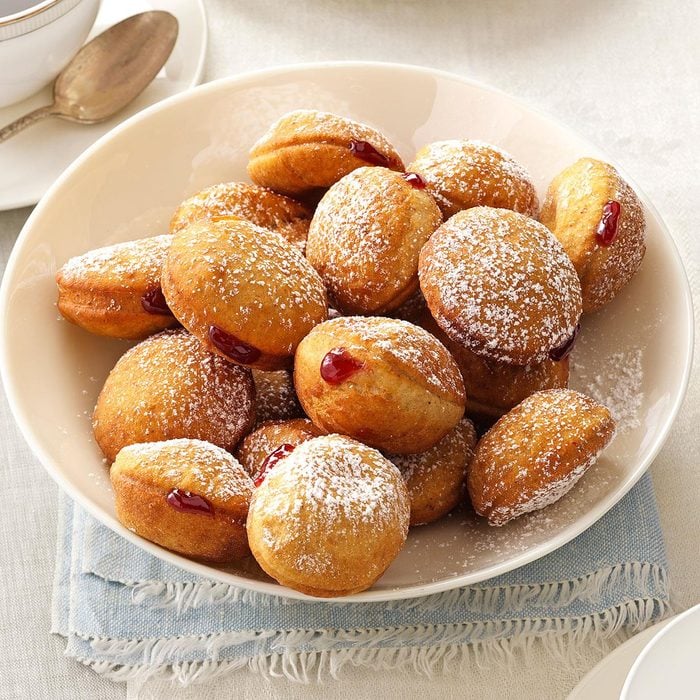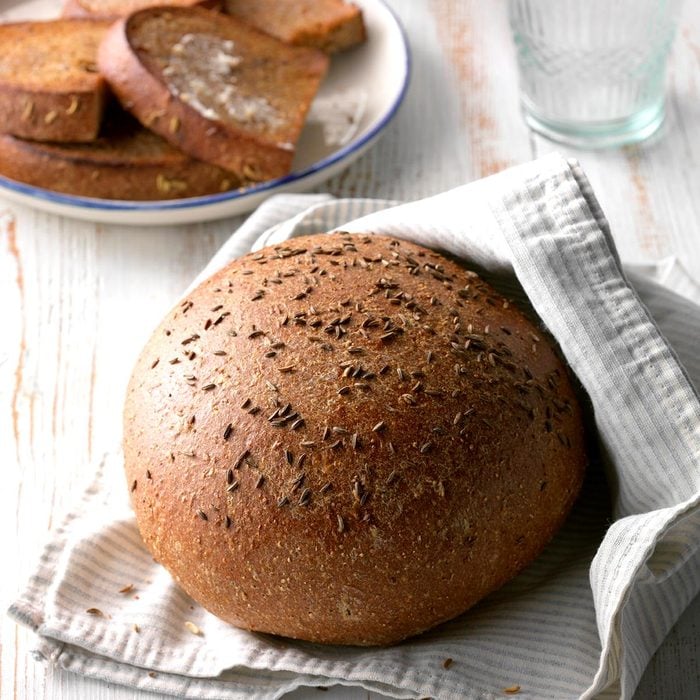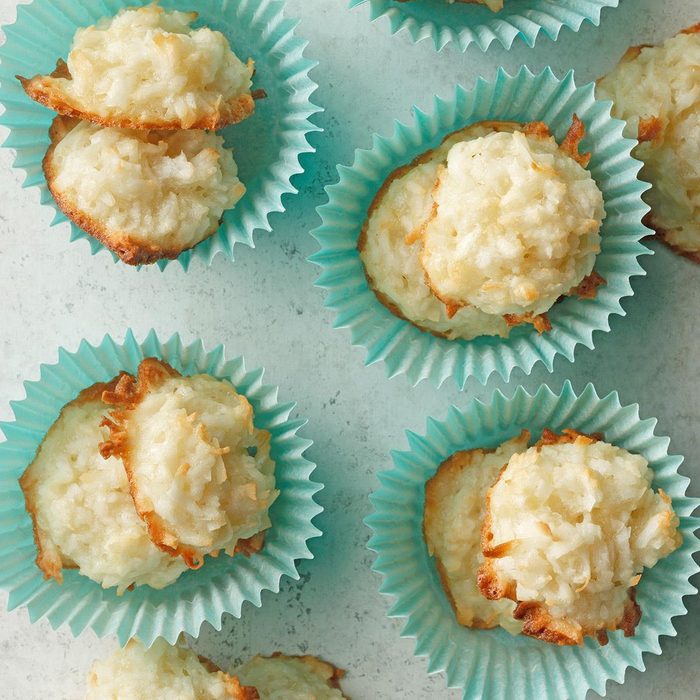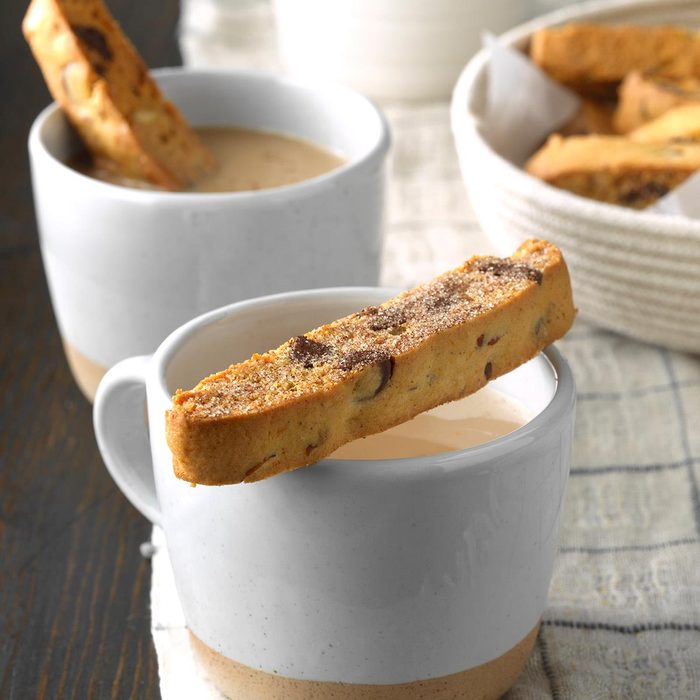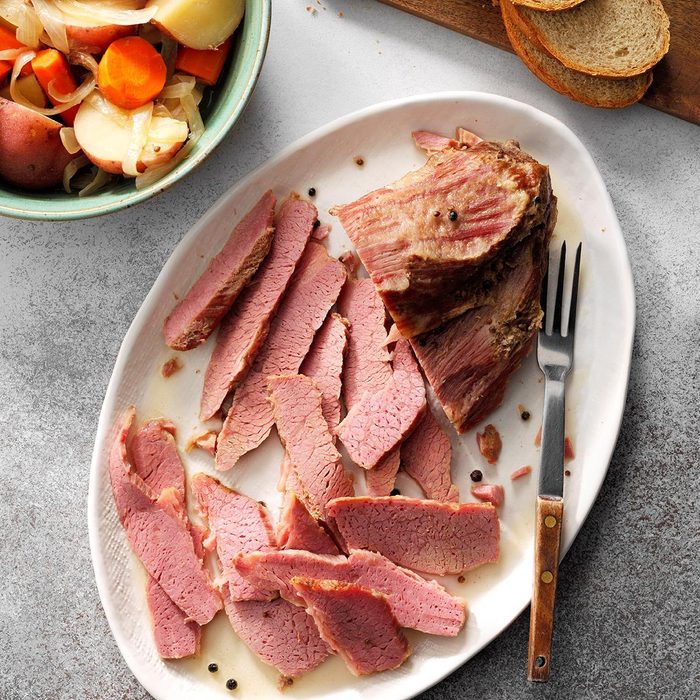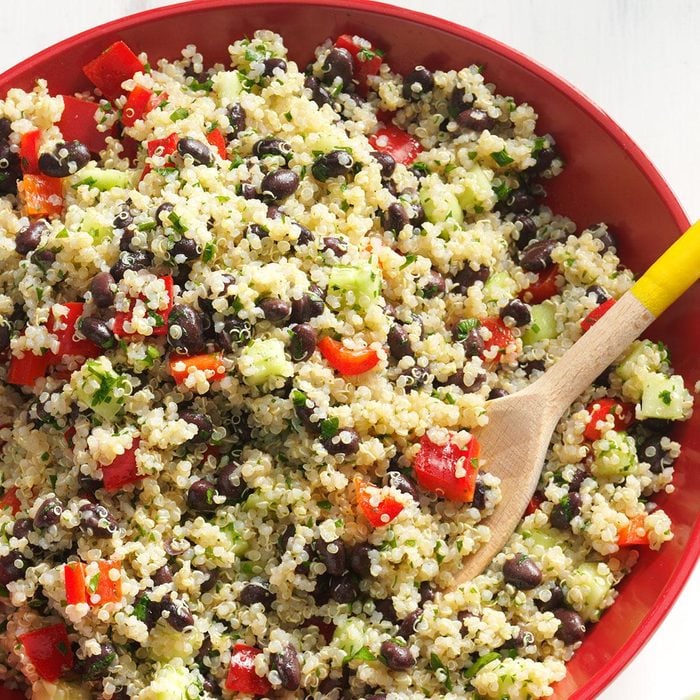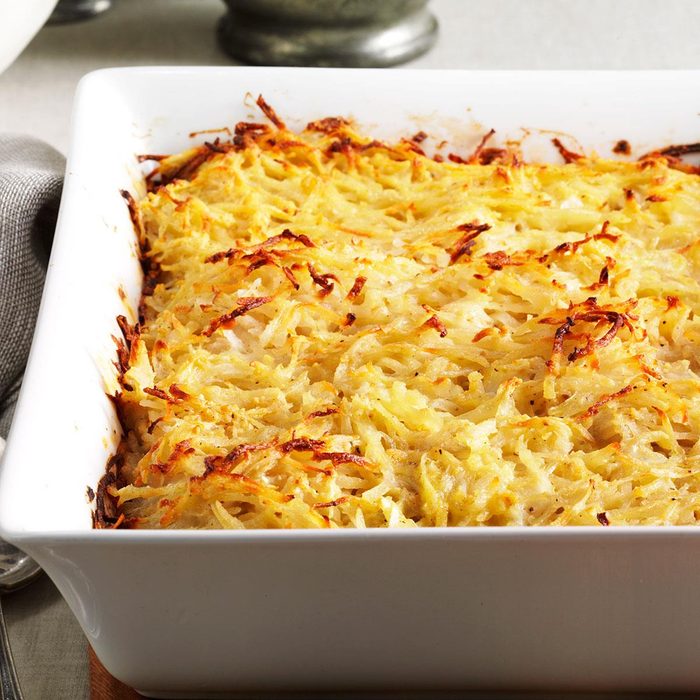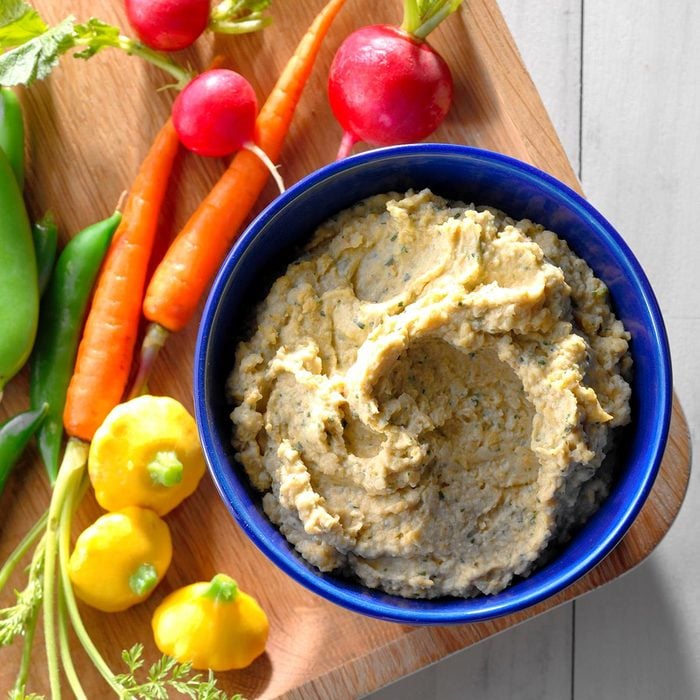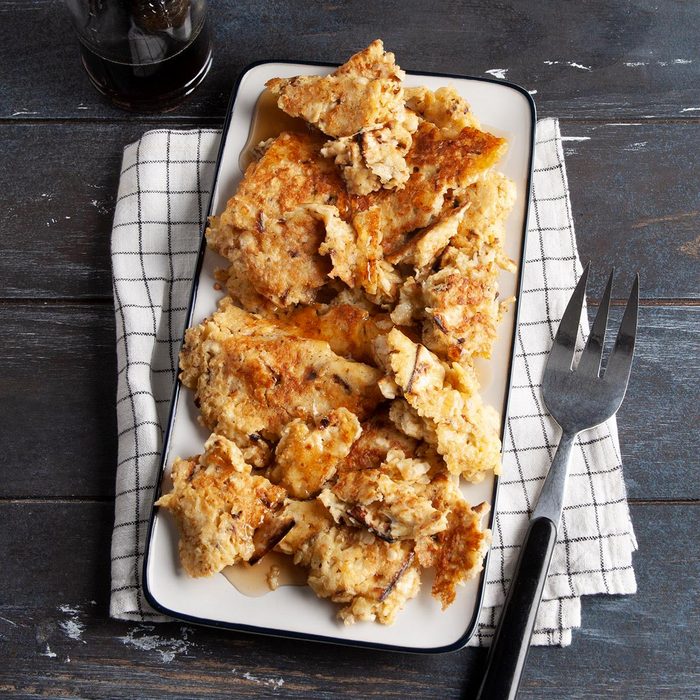Pronounced kuh-gull or koo-gull, this Jewish dish has been around for hundreds of years, and it’s a popular option for everything from holiday gatherings to family brunches. Whether you have Bubbe’s favorite recipe or are looking to try something new, kugel is an excellent dish for any occasion—and one you’ll come back to again and again.
What Is Kugel?
Hailing from Germany, kugel is—at its core—a baked casserole with starch (usually noodles or potatoes), eggs and fat. While that’s the base, kugels have many variations, from savory to sweet. The word kugel comes from German for sphere, which referred to the dumplings that made up the earliest version of the dish.
Today, both noodle and potato kugel are common additions to special meals. Noodle kugel tends to be more popular because of its versatility, and it’s more likely to be a sweet dish with added fruits and spices. Potato kugel is typically savory and can be made with onions, herbs and meat.
When Do You Serve Kugel?
Kugel can be served at Jewish holidays, special events or even a weekend brunch. It commonly makes an appearance on the dinner table during Shavuot (along with bourekas), when it’s traditional to consume dairy foods, and Shabbat, because it’s said that kugel resembles the manna that fell from heaven. It’s the perfect side dish for a Hanukkah latke party, as it adds some richness to the meal.
During Passover, a potato kugel is more appropriate because flour-based noodles aren’t served. It usually accompanies the meat entree, like Jewish brisket or roasted chicken.
What’s in a Kugel?
The big three are your starch (potatoes or noodles), eggs and fat. Otherwise, it’s totally up to you.
For noodle kugel, egg noodles are the most common type because they’re lighter and less dense than Italian pastas. For a casserole-sized dish, try extra-wide noodles, but if you’re making kugel in a muffin tin, try wide or medium-width noodles.
Noodle Kugel
When eggs, milk and cheese are added to a noodle kugel, a delicious custard is the result. Many recipes add fruits, like raisins, dried cherries or apple, and spices, like nutmeg and cinnamon. Apricot kugel uses apricot preserves and cinnamon for a sweet variation, while lemon kugel offers a citrusy take. Noodle kugels can be topped with cornflakes, graham cracker crumbs or even a streusel topping.
Potato Kugel
Potato kugels are often savory, stick-to-your-ribs side dishes, and typically have onion, eggs and fat, like rendered chicken fat. Any baking potato, like Russet or Idaho, works well. Some kugel variations may include veggies, like carrots or zucchini, caramelized onions, meat or garlic. Popular herbs to include are parsley and thyme, and savory kugels can be topped with French fried onions.
ⓘ
How to Make Kugel
This noodle kugel is baked in a 13×9-in. dish but can be converted for an 8×8-in. pan.
Ingredients
- 1 package (1 pound) egg noodles
- 1/2 cup butter, melted
- 8 large eggs
- 2 cups sugar
- 2 cups sour cream
- 2 cups 4% cottage cheese
Topping:
- 3/4 cup cinnamon graham cracker crumbs (about 4 whole crackers)
- 3 tablespoons butter, melted
Directions
Step 1: Cook the noodles
Cook the noodles according to package directions and drain. You’ll want to cook them until just al dente to ensure they don’t get too soggy. Toss the noodles with butter and set aside to cool.
Step 2: Mix the kugel ingredients
In a large bowl, beat the eggs, sugar, sour cream and cottage cheese until well blended. Stir in the noodles. Make sure the noodles have cooled to prevent them from scrambling the eggs.
Step 3: Top with crackers
Next, transfer the mixture to a greased 13×9-in. baking dish. Combine the cracker crumbs and butter, and sprinkle over the top.
Step 4: Bake
Bake, uncovered, at 350°F for 50-55 minutes or until a thermometer reads 160°. Any hotter could cause the custard to split.
Step 5: Serve the kugel
Let the kugel stand for 10 minutes before cutting, if you can wait that long! Serve warm or cold.
Kugel can be frozen up to two months, but be sure to wrap it very well. If you’re planning for a special event, kugel can be made up to two days in advance.
Different Ways to Make Kugel
Where there are a variety of ways to make the classic noodle and potato kugel, you could try a more non-traditional option, like onion kugel, which resembles a delicious souffle. Finely chopped onions and matzo meal serve as the base of this dish.
Or try a Swiss potato kugel, which includes Swiss cheese and half-and-half cream for a decadent treat. If you love cauliflower, try this cauliflower dill kugel, which features ricotta cheese that adds a distinct creaminess and lightness. Whatever variation you try, this side dish will be a family favorite.
Then, once you’ve mastered kugel, check out the Jewish foods everyone should learn to cook.
Matzo Ball SoupThis recipe is worth the time and effort it takes for such a delicious and comforting meal. With the fluffy matzo balls, chicken, carrots, celery and onions, it's got everything you want in a bowl of soup. Make it to help fight off a cold or just to have something cozy for a winter night.
Matzo ball soup is also a popular holiday food, from Shabbat to Passover, and can be served at your Seder alongside one of these Passover chicken recipes.
Passover PopoversThis substitute for bread is perfect for sharing around the table during Passover. Made with only five ingredients, it'll use up any leftover matzo cake meal you have in your pantry. Check out other dishes to serve alongside your popovers with these classic
Jewish cookbooks.
Easy Smoked SalmonGravlax, smoked salmon, lox…whichever iteration you love, there's no denying this salt-cured fish is a welcome addition to any bagel, cracker or slice of toast. You can easily find different versions of the beloved salmon at your local grocer, but why not try your own hand at it with this shortcut recipe.
Rainbow CookiesShannon Sarna, a home cook and editor at
The Nosher, shares her family's most beloved dessert: rainbow cookies. These classic New York treats are traditionally served in synagogues and at Jewish celebrations, but actually have Italian roots. To make, you bake three thin cakes, spread jam between them and coat with smooth melted chocolate.
Potato LatkesWhether you eat them with applesauce, sour cream or both, potato latkes are a staple that are enjoyed throughout the celebration of Hanukkah and beyond. If you're feeling extra adventurous, try topping them off with smoked salmon or
poached eggs.
BrisketCarving into a juicy, tender roast for family dinner will never get old. Especially when it's a
brisket that's been braising for hours, so it basically melts in your mouth. Use the leftovers for delicious sandwiches all week long!
ShakshukaTwo words: one pot. That's the only dish you'll need to make shakshuka, a Middle Eastern and North African dish that features eggs cooked in a spicy tomato sauce. And you can make it any time since it's great for breakfast, lunch and dinner!
RugelachThere are a lot of delicious
Jewish desserts out there, thankfully you don't have to be Jewish to enjoy any of them! Filled with fruity, sugary goodness, rugelach is a must-make for anyone with a sweet tooth. Grab a cup of coffee and try some of our favorite
rugelach varieties.
Chocolate BabkaEvery grandmother has her own take on
babka, and they're all delicious. But we're suckers for chocolate, so we had to try this special chocolate and cinnamon recipe flecked with orange zest. Other traditional fillings include nuts or dried fruits.
TzimmesServe this classic dish for holiday meals and everyone will be raving about how good it is. Its sweet flavor comes from sweet potatoes, prunes, honey and brown sugar. This side is a great accompaniment to any of our
Passover lamb recipes.
Pickled Cucumber SaladJewish cuisine has always included lots of pickles. From
homemade pickles to a jar from the grocery store, they can zest up any meal. This sweet and tart pickled cucumber salad makes a great side dish while giving a nod to the classic kosher dill.
Honey ChallahThis sweeter honey challah is studded with raisins and perfect for your
Rosh Hashanah meal. The leftovers of this sweet bread are also great for
challah French toast or
bread pudding.
HamantaschenEaten during the holiday of Purim, these flaky pastries are as easy to make as they are delicious. Fill the center pockets with whatever you'd like, from apricot preserves to the traditional poppy seed jam.
Homemade BagelsBagels are a staple at Jewish bakeries and delis. While they take some time and effort, they are a satisfying bake to try at home. Top them with some lox and cream cheese and you're set!
Beet BorschtSome people call it fall; we call it "soup season." And what better way to warm up when the temperature drops than with a piping-hot bowl of borscht? Add a dash of
horseradish to the bright red soup for extra heat.
SufganiyotIf loving sufganiyot is wrong, we "donut" want to be right. The fluffy jelly doughnuts are filled with tart raspberry preserves, sprinkled with sugar and served warm. You'll definitely be reaching for seconds (or even thirds!).
Rustic Rye BreadThis rustic rye bread has an added sweetness to it from brown sugar and molasses, perfect as a side to a classic Jewish dish. Just add a touch of butter to a slice of bread and your meal will be complete.
Coconut MacaroonsWith only six ingredients, these chewy coconut macaroons are a beginner baker's dream. Just stir everything together, drop dollops onto a cookie sheet and toss them in the oven. If you really want to indulge, dip the cooled cookies in melty chocolate. Yum!
Mandelbrot Mandelbrot (translated from German means "almond bread") is similar to an Italian biscotti but uses no butter. These twice-baked cookies use oil instead and can be filled with the mix-ins of your choosing.
Slow-Cooked Corned BeefPut this in the slow cooker in the morning, and it'll be ready by dinner time. Packed with red potatoes, carrots and onions, this corned beef dish will leave you with a full and satisfied stomach.
TabboulehTabbouleh is a grain salad popular in Israel. It's traditionally made with bulgur, but you can easily substitute other grains and starches like couscous, farrow or quinoa.
KugelMade with noodles or potatoes,
kugel is a classic Jewish side dish. Sweet noodle kugel is rich and creamy, which makes it a nice treat to have on holidays and special occasions. Make it the way Bubbe might with this recipe.
Cherry Cheese BlintzesIn only 30 minutes, you'll have creamy blintzes you can serve for breakfast or dessert. Its sweet taste comes from a surprising filling of cottage cheese and cream cheese. Not a fan of cherries? No worries, this recipe is customizable to incorporate your favorite fruits like blueberries, strawberries or peaches instead.
CharosetAhhh, charoset. We don't know if it's the sweet apples, the crunch of the walnuts, or the scent of the spicy cinnamon that we love most. But what we do know is that it's the perfect last bite to any meal, though it's traditionally served during Passover.
HummusForget the chips—we're just here for the dip. And by dip, we mean
hummus, that creamy chickpea-based spread that makes even raw celery taste delicious. Start with a classic base, then add in your favorite flavors to make some finger-licking variations.
 Jamie Thrower For Taste Of Home
Jamie Thrower For Taste Of Home
Matzo BreiMatzo brei is a favorite Passover food, but it's definitely not just for Passover! This egg and matzoh scramble is the Jewish version of
chilaquiles, and it can be strictly savory or a sweet-and-savory combo. Though usually served as a breakfast dish, matzo brei is so tasty and easy that I'd eat it any time of day.
Matzo Meal PancakesSometimes the week of Passover can feel more like a month, so it helps to have some classics to get you through. Enter matzo meal pancakes—like regular pancakes, but with
kosher-for-Passover matzo meal. Whip up a batch of these for breakfast during Passover or any other time of year that you're craving pancakes.
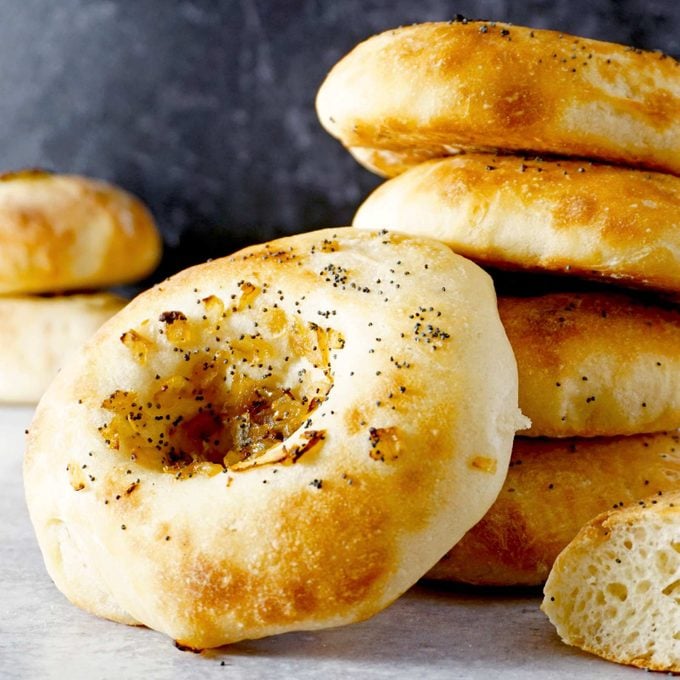 Lauren Habermehl for Taste of Home
Lauren Habermehl for Taste of Home
KnishKnishes, the elusive puffy dough balls stuffed with savory fillings, are the epitome of comfort food. They're sold in Jewish neighborhoods across the world, though you may not have heard of them if you're not Jewish. Try your hand at the humble knish and see what all the fuss is about.


